The beautiful petunia does not need constant care. This plant is unpretentious, and therefore, when following the basic rules of care, it is easy to grow a real flowering miracle from ordinary seeds. A flower pot will decorate the terrace, balcony or garden.
Material Content:
Petunia: types, varieties and description
In nature, there are about 20 species of petunias, on the basis of which breeders have created many varieties. For home cultivation, a hybrid or garden variety is used. Varieties of the latter differ in the shape of the bush and color of the flowers.
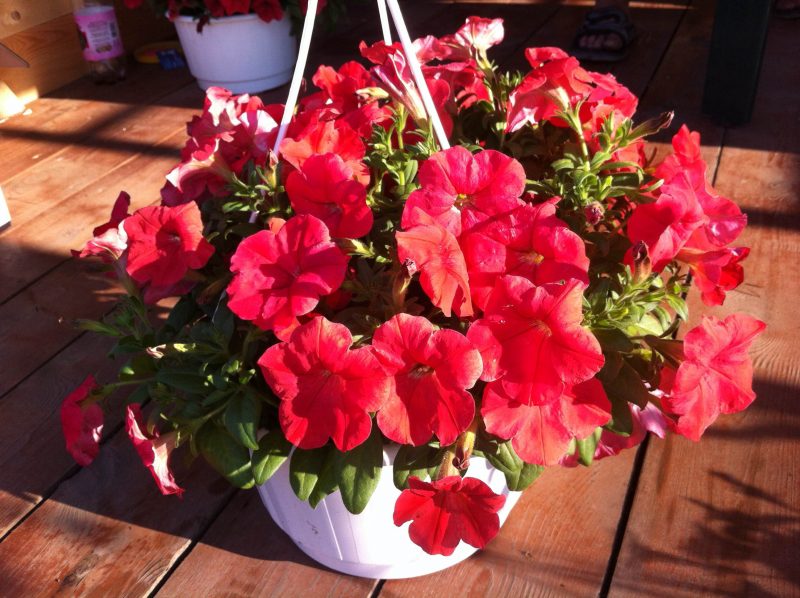
According to the shape of a bush, petunias are:
- spray - Fantasy, Dream (short series), Ultra, Titanium, Polaris, Storm (weather-resistant), Hit parade;
- cascading - Silver, Cherry, Rose, Ramblin, Typhoon;
- ampelous - Surfinia, Lilac surf, Waterfall, Pearl surf, Wave of luck.
According to the shape of the flower, the plant is represented by terry, semi-double and simple varieties. According to the type of flowering, large-flowered, floribunda (intermediate varieties between large-flowered and multi-flowered), multi-flowered, small-flowered and mini-flowered petunias are distinguished.
Popular varieties:
- large-flowered simple - Daddy, Picotee, Prism, Sophistica, Storm;
- large-flowered terry - Double Cascade, Pirouette, Sonata;
- floribunda - Sonya, Celebrity, Madnes;
- multi-flowered - Carpet, Celebrity, Mirage;
- small-flowered - Bonanza, Duo;
- minitravel - Fantasy.
Varieties of petunias are often represented by a series of similar plants with different colors of flowers.
It is interesting:Kalanchoe Blossfeld
Growing petunia from seeds at home
Growing petunias begins with a selection of quality seeds. If the label F1 stands on the package with seeds next to the name of the variety, then this is a hybrid variety obtained by artificial pollination.

Hybrids are slightly more expensive than ordinary varietal plants, but have several advantages over them:
- resistant to diseases and pests;
- more decorative;
- better endure the vagaries of nature.
Adult plants obtained from hybrid seeds can only be propagated vegetatively.
When to sow petunia on seedlings
From sowing to planting takes 3 - 3.5 months.
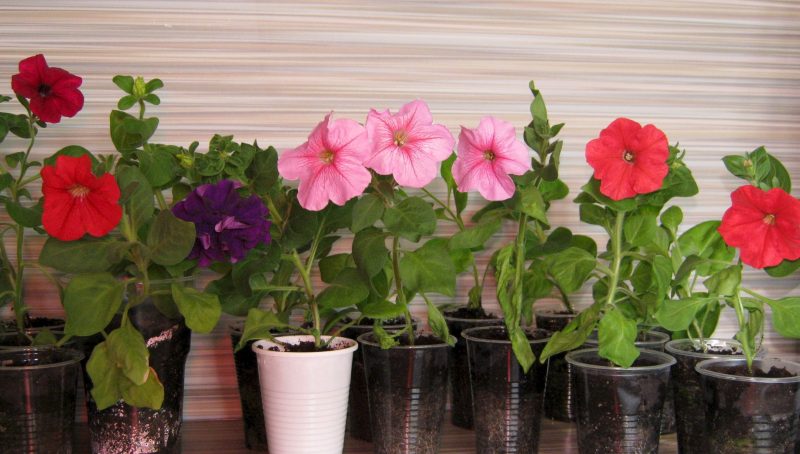
If it is not possible to highlight seedlings, the seeds are sown in mid or late February.
Terry varieties of petunias are preferably sown 1 to 2 weeks earlier than the rest, since such plants are characterized by slow growth, they need more time to form.
Ideal composition for soil
Sowing seeds is carried out in light soil, permeable to moisture and air. Suitable universal soil purchased in a store mixed in equal proportions with coarse sand.
Petunia prefers to grow on acidified soils. Growing in acidic soil, it better absorbs the nutrients introduced with top dressing. In ordinary alkaline soil, the root system does not absorb fertilizers well, the plant develops and blooms worse. This is important to consider when planting petunia seedlings in a permanent place.
Sowing seeds for seedlings
Petunia is a small-seeded plant; it can be sown in two ways. The first is the surface laying of seeds in the soil. In the second planting method, the seeds are lightly sprinkled with fine river sand.
It is interesting:how to feed petunia for plentiful flowering
Deep seed placement will hinder their successful germination.
- Sow seeds in rows. The distance between seeds is up to 1 cm, between rows - 4 or 5 cm. The row sowing system is favorable for good ventilation of seedlings.
- After sowing, watering is done using a sprayer.
- The seed box is covered with foil or glass so that they do not dry out.
It is convenient to sow rare varieties of petunia in peat tablets. 2 large seeds are placed in each large tablet.
- Before sowing, peat tablets are soaked in melt or spring water with the addition of growth stimulator HB-101 (dosage of 2 drops per 1 liter of liquid).
- Seeds are laid out with a toothpick on the surface of the tablets and sprayed from a spray bottle.
- The tray containing the peat pellets with seeded seeds is covered with a transparent lid or film.
Seedling Care
During seed germination, it is important to constantly moisten the soil so that the seedlings do not die. After planting in the soil, seedlings are pecked for 5-10 days.
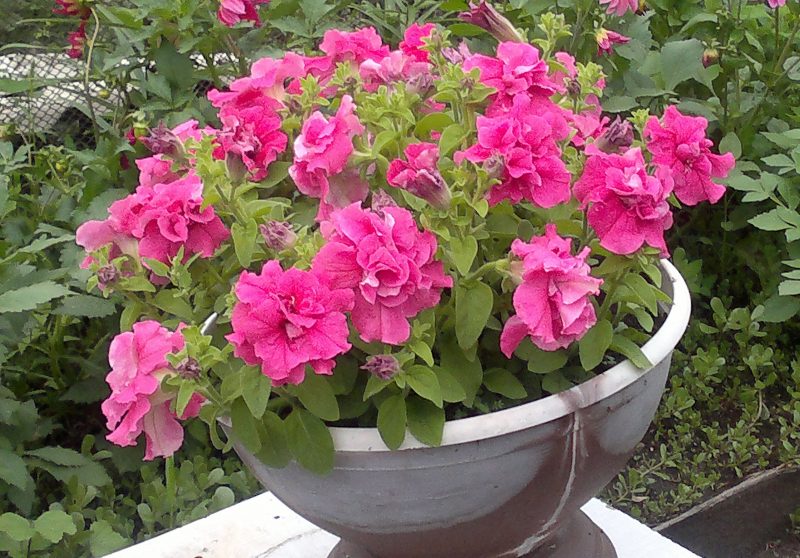
A box with shoots is immediately put on a well-lit shelf or a warm windowsill, the air temperature should be +20 or + 25 ° C. The film or glass is removed.
It is necessary to highlight the emerged sprouts with a special lamp for seedlings, so that the plants do not stretch out and grow healthy. It is advisable to lower the air temperature to +18 or + 20 ° C.
Artificial highlighting of seedlings is carried out during the first two weeks around the clock. The lamps use fluorescent, at the rate of 2 lamps of 30 watts per 1 m2 of area.
Watering should be moderate, plants do not fill and do not overdry. It is useful to loosen the earth between the rows.
Picking seedlings
- The first pick in the boxes is carried out when the plants begin to obscure each other. If seeding was done in cassettes, one procedure can be dispensed with.The distance between the seedlings in the box after the first pick should be about 5 cm in a row and the same between the rows. After all the manipulations, the petunia is watered with a complex mineral fertilizer. Phosphorus should prevail in the composition of top dressing for good development of the roots of seedlings. Other trace elements must also be present.
- When the seedlings become crowded, a second pick is carried out in seedlings. In this case, the seedling can be buried to the cotyledon leaves. After a picking, top dressing is carried out using a growth stimulant or mineral fertilizer.
Humidity should be moderate, watering regular, but not excessive. After irrigation, water should not pour liberally through drainage holes - leaves may turn yellow from overflow.
From time to time, in the glasses with seedlings, the surface soil layer is loosened so that the root system is better formed. Dosing of grown seedlings is not carried out. Air temperature should be around + 20 ° C, and at least + 16 ° C.
How to pinch a petunia
To form a beautiful bush, you need to pinch the petunia. Thanks to this technique, a lush plant with a large number of flowers is obtained.
When and how to pinch a petunia? This begins to do when 6 to 8 leaves appear in the seedlings and lateral shoots are formed. Pinch the central shoot (the main point of growth) by several millimeters. After this, the side shoots will begin to grow more intensively, forming a beautiful, lush bush.
Feeding seedlings
The first top dressing of seedlings is done with Teraflex or Kemira fertilizer. The ratio of the main components is N11: P40: K11. 25 g of the drug are diluted in 10 liters of water. In time, seedlings begin to feed when the first true leaves appear.
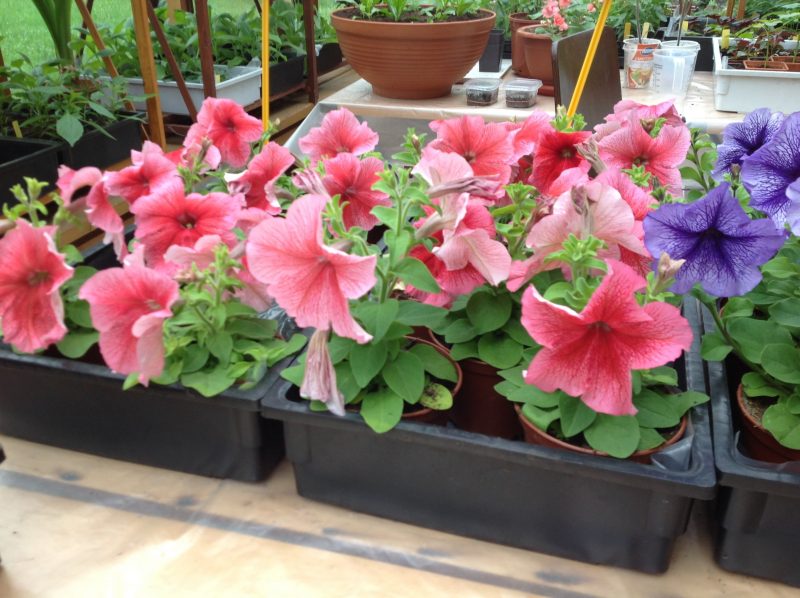
As the plants grow and develop, they are fed with complex mineral fertilizers. Nitroammophosco (20 g per 10 liters of water) can be used.
Top dressing is done no more than 1 time in 2 weeks, in the morning. Root top dressing can be combined with leaf. Spray foliage with preparations with microelements, for example, "Brexil".
If the soil and water are alkaline, once every 14 days it is necessary to irrigate with the addition of phosphoric acid at the rate of 3-5 cm3 per 10 liters of water.
Transplanting a flower to a permanent place
Healthy seedlings bloom even in seedling pots. Planting petunias in open ground is carried out when the blowjob is a threat of severe frost. Seedlings can endure night cooling to 0 ° C.
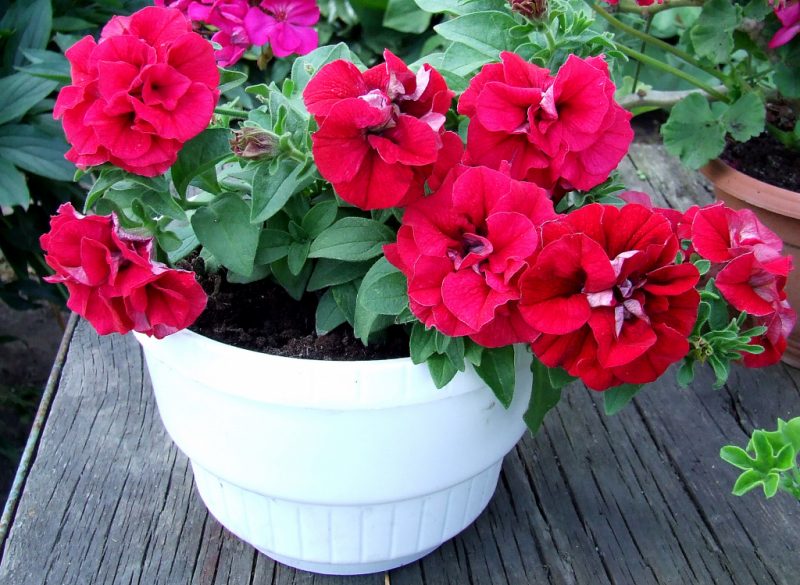
The soil in the flower bed is prepared in advance - weeds are pulled out, they are dug up. The plant loves the soil acidified, the best will be a mixture of fertile turf land, peat and sand.
The nuances of further care for petunia
The beautiful petunia pleases with bright colors all summer until the colds with proper care. It is important to take into account the characteristics of the plant, observe the watering schedule, do top dressing and pruning.
Watering schedule
Petunia does not like much evaporation of moisture from the soil, it does not need to be watered often. The best option is drip irrigation, but you can use a regular watering can.
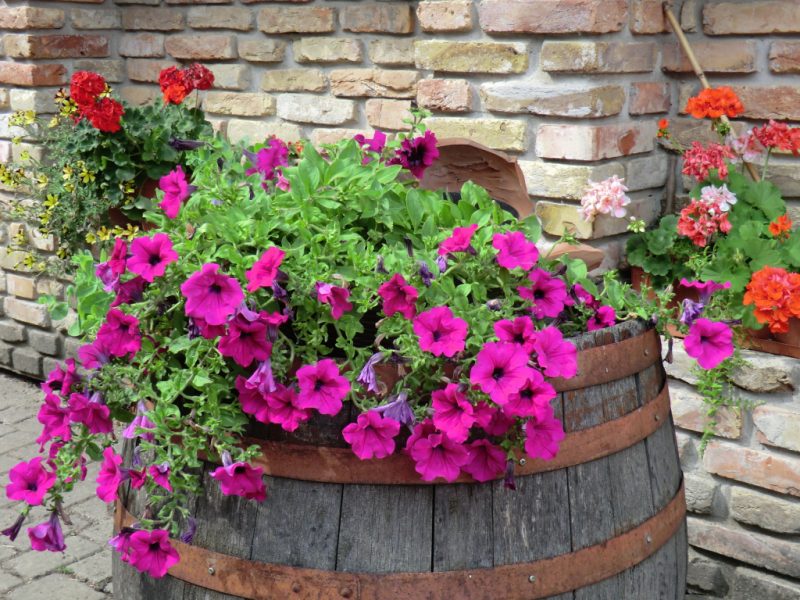
In hot weather, it is enough to water the flower bed with petunias once a week.
If plants are planted in flower pots, they will need more frequent watering. Water is poured under the plants, avoiding sprinkling on leaves and flowers.
Useful fertilizers for indoor flower
In order for ampelous and bushy petunia to grow better and flourish, it is important to fertilize it. Potassium and phosphate fertilizers should predominate in the fertilizing of adult plants. You can use "Potassium phosphate" or "Pecacid" (20 g per 10 l). Potash and phosphorus fertilizing stimulate the growth of side shoots and flowering.
Plant pruning
Petunia care sometimes involves pruning adult plants.
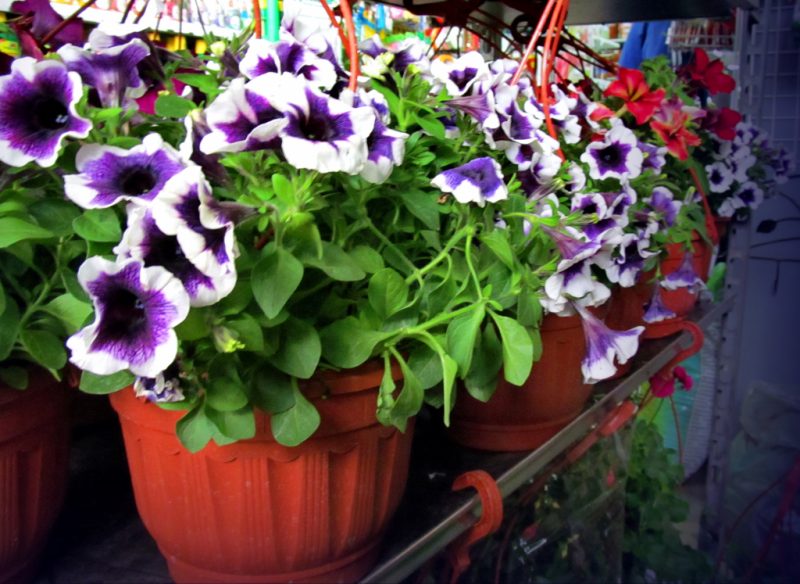
- If the bush begins to decay, loses its beautiful shape and compactness, pruning is necessary. The shoots are not completely cut off, but only the tops. Cut length depends on the shape that is desired for the plant.
- There are cascading varieties with lush bushes and a large number of flowers that do not need to be formed. In such plants, only dried and thinned shoots are cut.
- Anti-aging pruning is useful for petunias. Soon on the green, shortened pruned branches, new shoots with flower buds appear. It is advisable to prune the petunia when flowers are fading or signs of disease appear.
Pest and Disease Control
Most often, petunia is ill with chlorosis. The leaves turn yellow if the soil is not sufficiently acidic or in the absence of the necessary trace elements (mainly iron). To treat chlorosis, plants are sprayed with iron chelate.
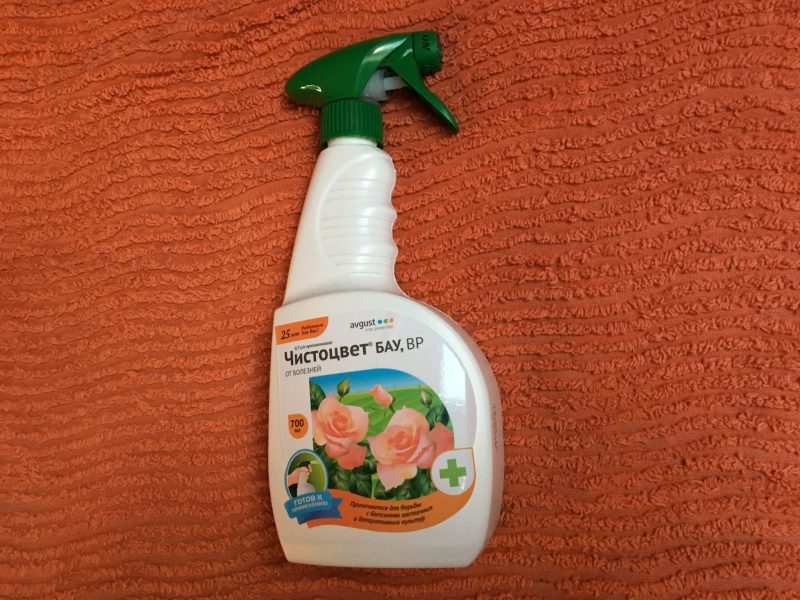
At an older age, petunias are susceptible to powdery mildew. This fungal disease occurs due to waterlogging. It can be recognized by a white coating on the back of the leaves. For treatment, plants are sprayed with preparations: Chistotsvet, Ordak, Tiovit Jet, Protan. It is advisable to carry out treatment for prevention in wet, rainy weather.
Timely feeding helps plants grow stronger and less sick.
Propagation of petunias by cuttings
Beautiful hybrid varieties of petunias are reproduced only by cuttings. In order to propagate a plant you like, it is important to know the rules for growing seedlings from cuttings.
- In March or April, when it is best to cuttings, cut off the ends of young shoots with 2 or 3 internodes. Shank should be 5 or 6 cm long.
- At the cutaway shoot, lower leaves are removed and planted, buried by 2 or 3 cm in a box with prepared soil.
- The land should be light - 50% consist of peat, 25% sand and 25% fertile sod land. It is advisable to pour 1 cm of dry sand on top. The end of the cuttings before planting is dipped into the "Kornevin."
- Pour cuttings with clean water with a weak solution of potassium permanganate.
- After 2 weeks, the cuttings will take root and then they need to be planted in separate containers.
Petunia flowers will decorate the front garden, loggia or flower bed with abundant flowering. Many varieties bloom all summer and have a pleasant fragrance. You can choose any color of flowers to create a beautiful decoration of the garden or premises.












